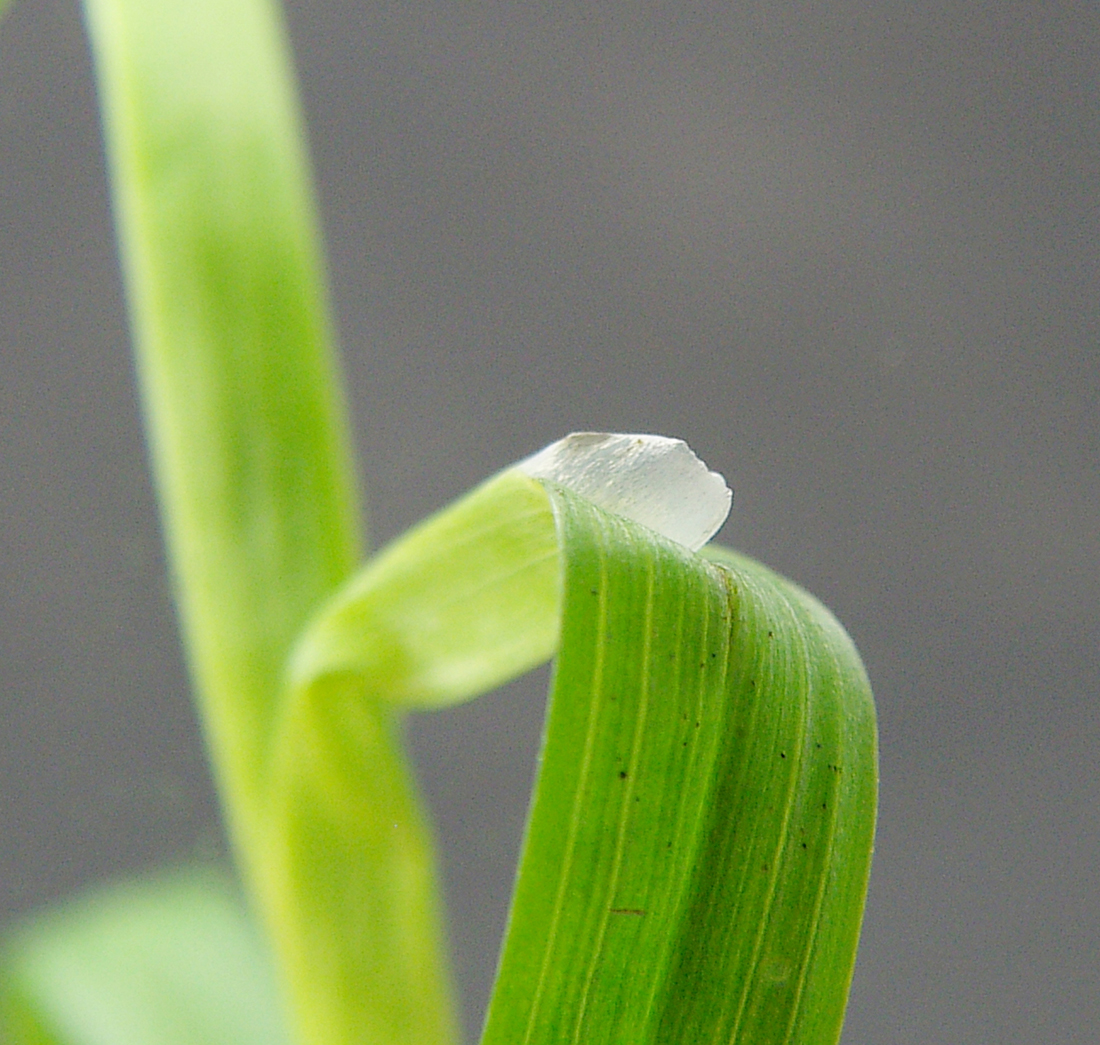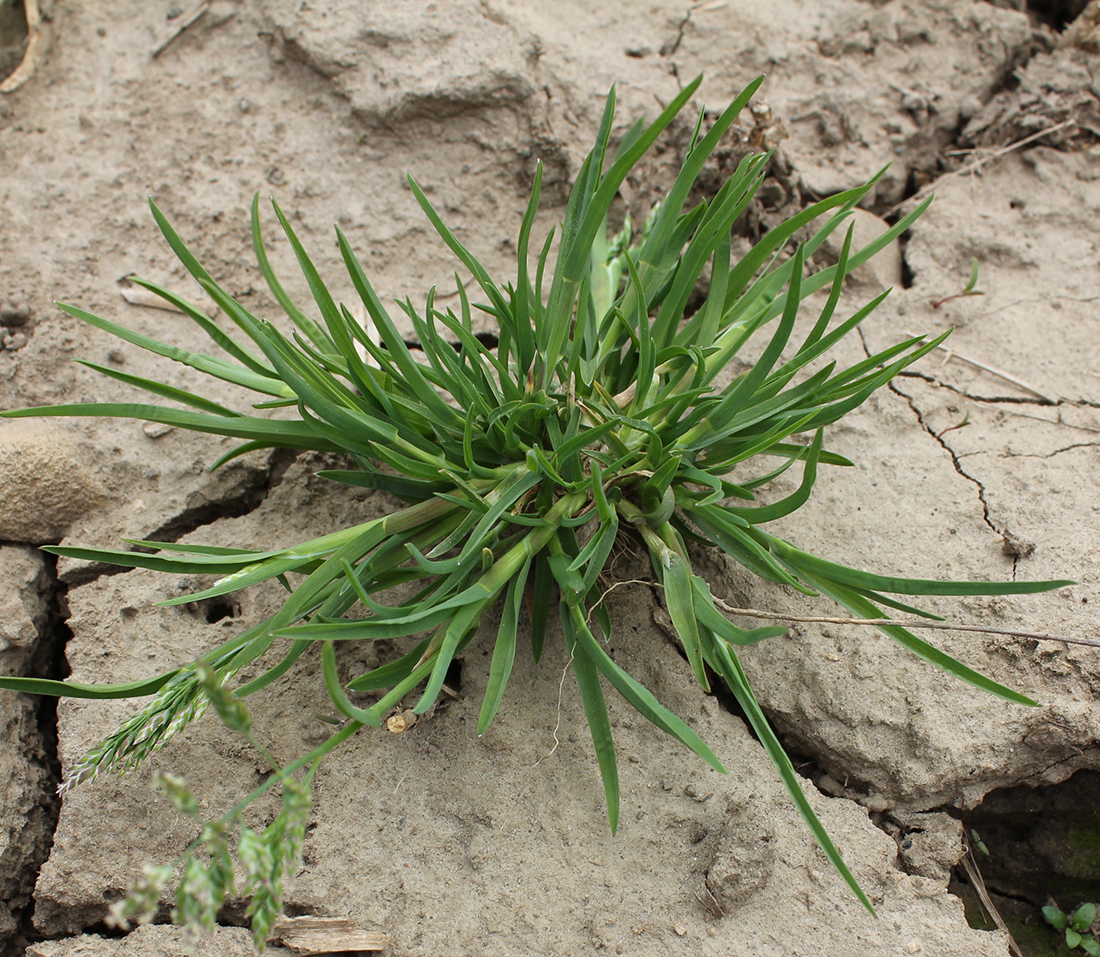Bluegrass Species
- Grass family (Poaceae family):
- Poa spp.
- EPPO code:
- POASP
- Other names:
- June grass, summer grass
Species information
- Lifecycle:
- Most bluegrass species are perennial, except annual bluegrass, which is annual.
- Propagation:
- Whether annual or perennial, all bluegrass species reproduce by seed and rhizomes.
Identification clues
- Auricles:
- Absent.
- Ligule:
- Membraneous.
- Leaf blade:
- The plant’s leaf blade is narrow, smooth and folded lengthwise with a bow- shaped tip.
- Best advice:
- It is very difficult to identify specific bluegrass species. Generally, if you see a grassy species that has a membraneous ligule and leaf blades that are narrow, smooth and folded with a bow-shaped tip (like the front of boat) then it could possibly be a Poa species. Oftentimes, if a farmer or agronomist thinks they have a bluegrass species, they will wait until the specimen has headed and then send it to the Ontario Agriculture College herbarium to have it appropriately identified. In the past we have commonly had confirmation of the following four species throughout cultivated fields in Ontario: annual bluegrass, Canada bluegrass, fowl meadow grass and roughstalk bluegrass.
To contact the OAC Herbarium, call





Updated: January 13, 2023
Published: January 13, 2023